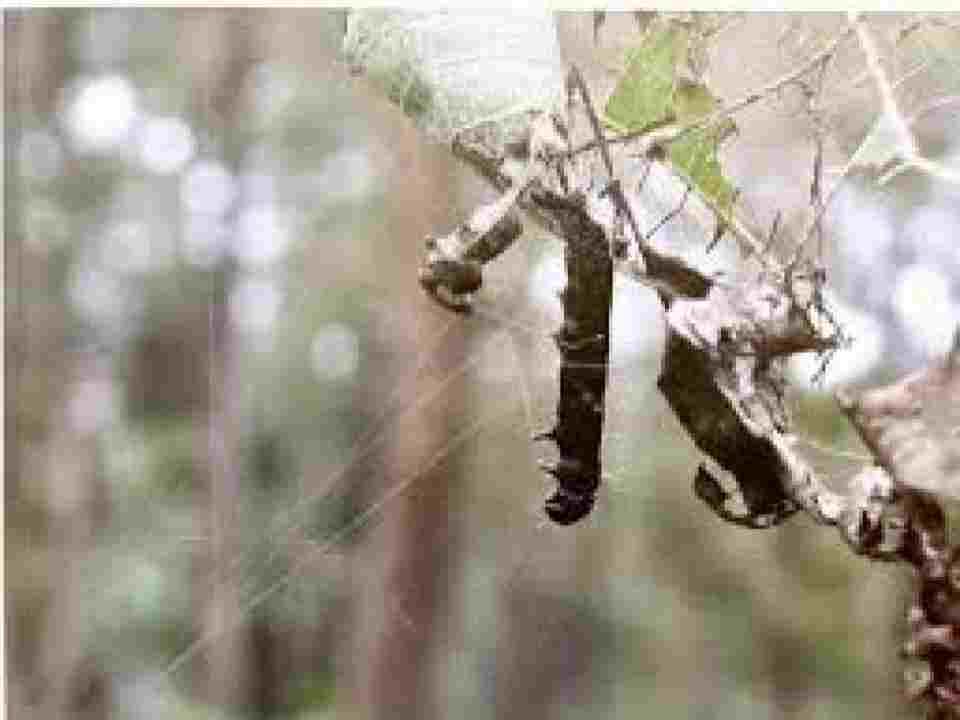Description
In a major step towards sustainable forest protection, the Kerala Forest Research Institute (KFRI) has successfully identified and mass-produced a naturally occurring virus known as Hyblaea puera Nucleopolyhedrosis Virus (HpNPV). This virus offers a safe, environmentally friendly alternative to chemical pesticides for managing the destructive teak defoliator moth (Hyblaea puera), a persistent pest responsible for significant damage to teak plantations across South and Southeast Asia.
Understanding Teak Defoliator Moth (Hyblaea puera)
The teak defoliator moth is a cryptic insect species and one of the most serious pests affecting teak trees (Tectona grandis). It is particularly notorious for its mass defoliation capabilities, leading to substantial economic and ecological damage in forest plantations.
Host Plants: Apart from teak, the moth also targets Avicennia marina, a common mangrove species found along the west coast of India, adding to its destructive impact.
Damage Mechanism: The larvae of the moth feed voraciously on the leaves of the teak tree, starting their attack with the onset of the monsoon. These larvae consume the entire leaf surface, sparing only the midrib, leaving the tree vulnerable and weakened.
Impact on Tree Growth: During infestation, teak trees are forced to redirect energy towards regenerating leaves rather than normal growth and timber production, leading to significant yield losses.
Geographic Spread: Native to tropical and subtropical regions of South and Southeast Asia, the pest is found across countries such as India, Sri Lanka, Bangladesh, Thailand, Malaysia, Indonesia, New Guinea, and parts of northern Australia. The earliest record of the pest dates back to 1898 in Kerala’s Konni Forest Division.
Economic Loss: Seasonal outbreaks, which occur annually, result in large-scale defoliation, severely affecting teak timber productivity and forest health.
Hyblaea puera Nucleopolyhedrosis Virus (HpNPV): A Promising Biocontrol Solution
To counter the pest without the harmful side effects of synthetic pesticides, researchers have focused on the Hyblaea puera Nucleopolyhedrosis Virus (HpNPV), a naturally occurring pathogen in the moth population.
About HpNPV - HpNPV is a species-specific viral agent that infects the larvae of the teak defoliator moth, causing lethal disease and significantly reducing their population.
How It Works - Once the larvae are infected, the virus replicates rapidly, reaching quantities as high as a trillion copies within a single larva. Upon death, the infected larva bursts open, dispersing large amounts of the virus into the environment, which further spreads the infection to other larvae.
Long-Term Effect - In cases where the infection is sub-lethal, the virus can still persist in the insect’s body, get passed on to subsequent generations, and eventually become fatal creating a self-sustaining control cycle.
Eco-Friendly Control - HpNPV provides a targeted approach to pest control, impacting only the teak defoliator moth without harming other organisms, making it ideal for use in ecologically sensitive teak and mangrove ecosystems.
Scalability - With successful mass production achieved by KFRI, the virus is now poised for large-scale application in forest plantations across India and potentially other countries facing similar pest outbreaks.
Significance Of Development
This breakthrough not only ensures the protection of valuable teak plantations but also promotes sustainable forestry practices. By reducing reliance on harmful chemical pesticides, the use of HpNPV aligns with India’s broader goals of biodiversity conservation, eco-restoration, and climate-resilient forestry.
Welcome to Notopedia.com, your free learning platform that caters to the diverse needs of students and aspirants across a spectrum of entrance exams and educational endeavors. Whether you're preparing for highly anticipated exams like CAT, NEET, JEE Main, or bank job vacancies, our platform offers a wealth of resources to guide you towards success. Stay up-to-date with the latest exam dates, announcements, and results for various government recruitment exams, including SSC CGL, CHSL, NDA, and UPSC. Explore comprehensive study materials, sample papers, and exam patterns to hone your skills and boost your confidence. From important dates like CBSE Class 10 and 12 date sheets to exam-specific information like JEE Main application form date, we cover it all. Notopedia.com is your go-to source for everything from admissions and admit cards to scholarships and college information. Whether you're aiming for a career in defense, government, banking, or higher education, our free learning platform equips you with the knowledge and resources you need to excel. Join us in your educational journey and unlock a world of opportunities, guidance, and comprehensive support.
For more Updates and Information - Visit Notopedia's Bulletin Board
For Latest Sarkari Jobs - Visit Notopedia's Sarkari Jobs Section
For access to more than 20,000 Colleges - Visit Notopedia's College Section
For School Studies and Exams Preparation across 14 Boards - Visit Notopedia's School Section
For Comprehensive Preparation of Sarkari Job Exams - Visit Notopedia's Sarkari Exams Section










